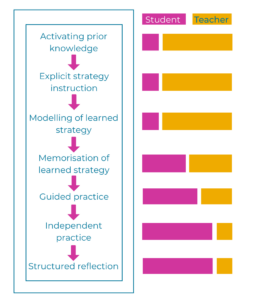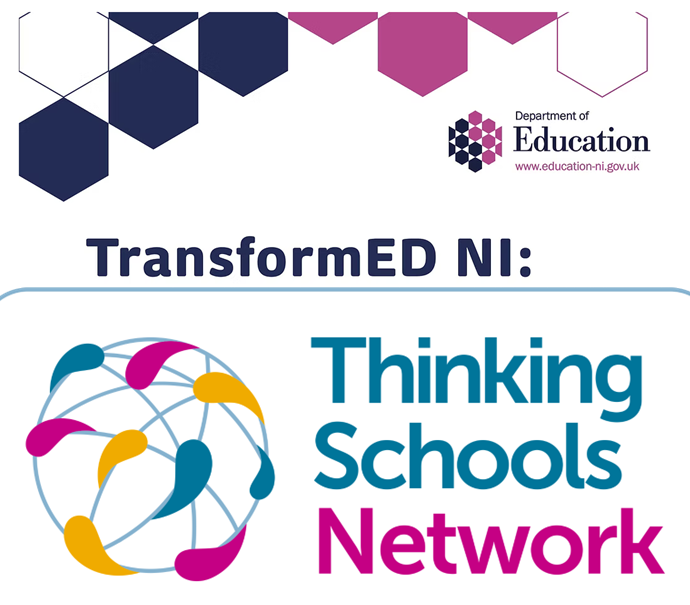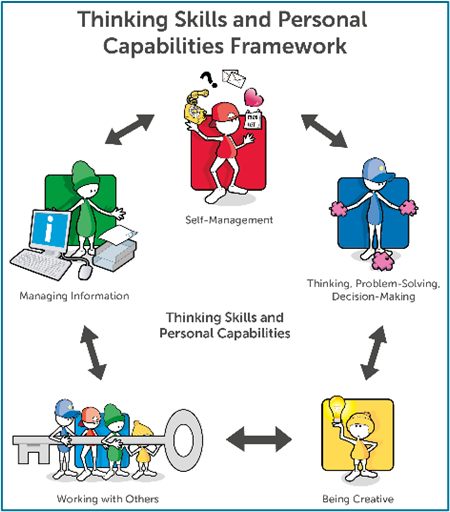Are there effective tools to develop SEND students' independence?
As a metacognitive tool, Thinking Frames can be highly effective in promoting independence, metacognition & self-regulation for SEND learners.
One of our guiding principles at Thinking Matters is the value to be fully ‘inclusive’. A Thinking School supports and includes everyone. We hold the underlying belief that all students: can think; that thinking capacity can be improved; and that all learners have innate abilities to think in a variety of ways.
In the context of inclusion, where diverse learners may have varying needs and abilities, developing metacognition and self-regulation skills requires a tailored approach that addresses their unique needs and challenges. As recently discussed in our white paper about Self-Regulated Learning, the OECD articulated the importance: “SRL is pivotal in preparing students to be agentic life-long learners in an unpredictable, dynamic, and ever-changing society” (OECD, 2018).

Applying the EEF’s seven-step model to support learners who have Special Educational Needs and Disabilities (SEND) using Thinking Frames can be highly effective in promoting metacognition and self-regulation. Here’s how you can integrate the seven steps with the use of Thinking Frames:
Set Goals: Begin by assessing the individual needs, strengths, and challenges of each SEND learner.

In the Thinking Matters ‘Big Picture’, the metaphor of an archer is used to represent the student. The archer is equipped with a bow, which represents their understanding of the Science of Learning and with a quiver of arrows – their ‘toolkit’ of metacognitive strategies. They use their bow and arrows to aim towards specific intelligent learning behaviours and cognitive capabilities identified on their target, ultimately with the goal of being an effective ‘meta-learner’; that is an independent, motivated, self-directing learner who has control and mastery of their own learning. Through collaboration with them and their parents or guardians we can help them set clear and achievable goals related to developing metacognitive skills and self-regulation; this is the first step in the Metacognitive Cycle
Activate prior knowledge: When we activate prior knowledge, we are essentially connecting new information to what we already know. By linking new information to existing knowledge and schemas, the information becomes more meaningful and easier to understand. These connections facilitate the encoding process and strengthen neural pathways. The result is that the information is more likely to be stored in our long-term memory. Students become more engaged as the new knowledge captures their attention as it aligns with something they already know. It also boosts confidence! This is also an opportunity to assess the metacognitive knowledge of each student: What do they already know about themselves as a learner? What do they know about the task being set? Which tools or strategies do they think might be most helpful?
Teach Metacognitive Strategies Explicitly: Giving learners a specific tool that is adaptable and helps them to scaffold their learning. Thinking Frames are specific visual tools (or graphic organisers), which represent the eight most commonly used thinking processes in classrooms. By using distinctive visual patterns, which help organised thinking and ideas, we also utilise ‘dual coding theory’ to ensure students are able to store, recall and enhance their understanding of the information presented. As Costa articulated: “Visual tools enable students to look into their own thinking ‘displayed metacognition.” In using visual tools, SEND learners are able to more effectively organise their thoughts, reflect and evolve their ideas and monitor their thinking process.
Model Thinking Aloud: By naming a specific thinking process and then displaying it using a Thinking Frame students are provided with a scaffold which helps navigate them through problem-solving tasks or learning activities. It enables the Cognitive Coach to narrate the thought processes, decision-making, and reasoning as the frames are created; thereby building a routine for learners to see metacognitive thinking in action.Over time they will gradually internalise the metacognitive strategies demonstrated.
Memorised Learned Strategies: As you check to see if pupils have understood what you have taught them, by seeing their thinking displayed it is easy for the cognitive coach to quickly check and address misconceptions and more importantly praise the ideas generated and the connections made. By repeatedly naming the thinking process and linking it with the metacognitive visual tool it encourages transfer of thinking skills and supports thinking at all levels.
Guided Practice: SEND learners can also use Thinking Frames as a focus for collaborative work with peers or cognitive coach support to enable them to download their ideas from their working memory and then reflect on what they know or have suggested. It becomes a space in which they can see their thinking displayed and use this to identify what they should do next. It provides the teacher with a perfect opportunity to monitor and adjust any errors or confusion at this stage.
Independent Practice: For many people, taking the first step in any situation can feel very uncomfortable and the same is true in the classroom. By supporting SEND learners to gradually use Thinking Frames in their learning activities with increasing independence, we are helping them to structure and organise their thinking. This will give them the space to effectively self-reflect and monitor their progress. As they become more familiar with the tools, they can be encouraged to independently select and use the appropriate frames to support their thinking and problem-solving processes. Remember, they are a stepping stone or a way of capturing ideas.
Structured Reflection: The Reflective Lens provides scope for reflective questioning and may be used to probe what strategies the student will now use to ensure they will remember key information learned or how effectively they feel they have completed the task. Asking a range of questions encourages SEND learners to reflect on how the frames helped them organise their thoughts, monitor their understanding, and achieve their goals.
Thinking Frames provide a common visual language for all students and teachers and in all subject areas. These Metacognitive Visual tools are adaptable for use by all age groups and can include use of images and concrete objects as well as written text; they are flexible for use across all subject areas and help to develop a metacognitive vocabulary.
Thinking Frames Training for SEND
CPD for Teachers
Whole-school Implementation
Become a Member of the Thinking Schools Network and take advantage of our FREE Consultancy to review where your organisation is in terms of ‘whole school metacognition’ – amongst a raft of other invaluable benefits including great classroom resources



